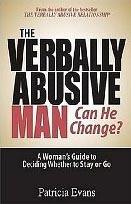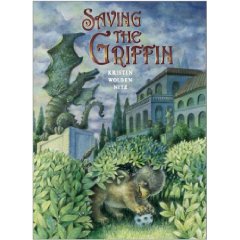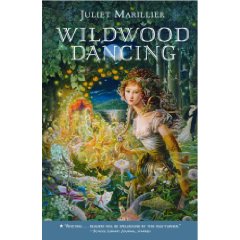
The Verbally Abusive Man
Can He Change?
A Woman’s Guide to Deciding Whether to Stay or Go
by Patricia Evans
Adams Media, Avon, Massachusetts, 2006. 269 pages.
Starred review.
http://www.verbalabuse.com/
http://www.adamsmedia.com/
When you think of verbal abuse, most people think of name-calling, yelling or swearing. Patricia Evans gives us a clear definition. I knew I didn’t like it at all when someone talks to me as described here. Now I understand why. It is verbal abuse.
She gives a clear definition, a definition that enables me to spot exactly which sentences are not only not true, they are abusive.
“Verbal abuse defines people in some negative way, and it creates emotional pain and mental anguish when it occurs in a relationship….
“Any statement that tells you what, who, or how you are, or what you think, feel, or want, is defining you and is, therefore, abusive. Such statements suggest an invasion of your very being, as if to say, ‘I’ve looked within you and now I’ll tell you what you want, feel, etc.’ Similarly, threats are verbally abusive because, like torture, they attempt to limit your freedom to choose and thus to define yourself. Of course, if you have defined yourself to someone, ‘I’m Suzy’s Mom,’ and that person says, ‘That’s Suzy’s Mom,’ they are affirming or validating what you have said. On the other hand, verbal abuse is a lie told to you or told to others about you. If you believe the lie, it would lead you to think that you are not who you are or that you are less than you are….
“Another common way the abuser defines his partner is by walking away when she is asking a question, or mentioning something, or even in the middle of a conversation. By withholding a response, he defines her as nonexistent.”
Here is a nice explanation of why being defined negatively by your partner is so painful:
“Clearly, when one person defines the other, the person doing the defining (abusing), has closed off from the real person. When a person is told what they are, think, feel, and so forth, it is not only a lie told to them about themselves, but also it means that the abuser is closed off from the real person. The abuser cannot really hear, see, and take in information from the real person. It is as if he sees someone else. For instance, if the abuser says, ‘You’re too sensitive’ or ‘You’re not listening,’ he is talking to someone whom he defines as ‘made wrong’ or as ‘not listening.’ So, the real person isn’t seen or heard. It is as if a wall has arisen between the verbally abusive man and his partner. This is why, when a man defines his partner, she feels pain. At some level, she experiences the end of the relationship.”
One refreshing thing about this book is that the author does NOT blame the person being abused for the abuse she receives. However, she does help you understand better what’s going on and equip you to respond more effectively.
The crux of this book is about giving the abuser a wakeup call in the form of an Agreement — an Agreement for both parties in the relationship. She also gives the reader guidelines as to whether the abuser is likely to actually change back to a loving, empathetic partner.
Even if the relationship is not in a place where you can use the Agreement, this book is invaluable in its presentation of how to respond to verbal abuse.
One important point is to learn not to try to respond to verbal abuse with logic. That only dignifies his viewpoint, as if it had a basis in reality. If you think about it rationally, how can he possibly know what your motives are? Verbal abuse is inherently irrational, so defending yourself with a rational argument is an ineffective response.
“Realizing that verbal abuse is not rational, it becomes clear that the man indulging in it can’t hear a rational response from his partner. But it is difficult for the partner not to respond with a rational explanation. For instance, she may say she didn’t deserve to be yelled at, or she didn’t do what she is being accused of, even when she knows that rational explanations just won’t work. It takes enormous conscious effort for the partner not to explain herself to her mate. It usually seems to her that he is rational and will apologize and not do it again.
“Women often talk about how hard it is to remember that there is no point in their ever responding rationally to verbal abuse, even when they know that verbal abuse is a lie. However, it is important for you to keep in mind that since the verbal abuse is a lie, it is incomprehensible. You must decide to see it as so untrue, so unimaginable, so unreal, that you simply say, ‘What?’ or ‘What did you say?’ or ‘What are you doing?’ This may gently prod him toward hearing himself if he starts defining you in any way.
“If in the past you told him, ‘Stop!’ when he was abusive and he didn’t, it is likely that he accused you of being abusive, saying, ‘Now you’re giving me orders and trying to control me. That’s abuse!’
“A good response to this lie is to simply say, ‘What?’ or even, ‘Did I just hear you tell me what I was trying to do? What did you say?’ After all, he just told you what your motives were and what you were trying to do, as if he were you….
“Ultimately, since you know that blaming is a category of verbal abuse, it should be easier not to blame yourself in any way for his behavior. You can see it as abusive no matter how much he blames you, tells you that you ‘made’ him mad, or tells you that it is your fault.”
If you still have a relationship with the verbal abuser, this book does offer hope of change: specific steps you can take to issue a wake-up call.
Even if the book only verifies that change is not likely, I found it well worth the cover price for two key ideas that it presented:
— Defining verbal abuse so you can easily recognize it and won’t be tempted to believe it.
— Teaching you to respond to it as incomprehensible, not as something you can reason away.
As with some other books I have read on unpleasant topics, I can’t help but think of the Bible verse, “You shall know the truth, and the truth shall make you free.” Understanding and naming the situation you’ve been living in is a huge step toward healing and being better able to cope.
This is truly a wonderful, helpful, and healing book.
Buy from Amazon.com
Find this review on the main site at www.sonderbooks.com/Nonfiction/verbally_abusive_man.html









